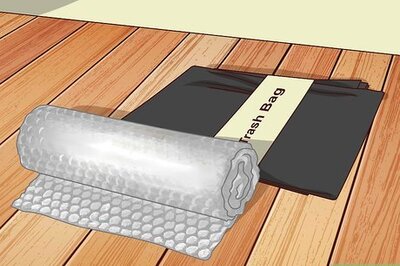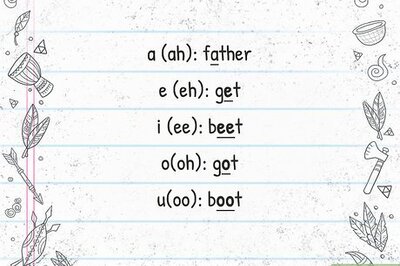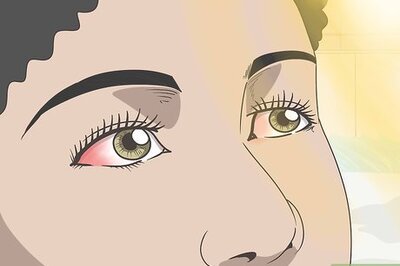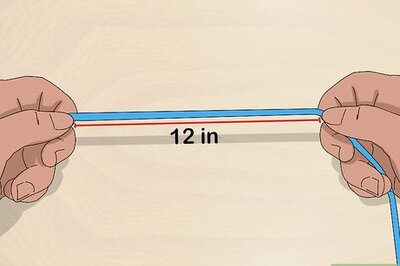
views
New Delhi: Tigmanshu Dhulia was a well known name in the television industry before he decided to become a film director. His first film 'Haasil' in 2003 proved to be the real launching pad for the versatile Irrfan Khan. Dhulia came with 'Charas' in 2004 but he had to wait till 2011 for his next release 'Shagird'. Back to back success of 'Sahib Biwi Aur Gangster' and 'Paan Singh Tomar' has brought the spotlight on Dhulia again. Tigmanshu talks about his films and how personal tragedies influence films.
Q: When did you decide to become a Hindi film director?
A: I decided when I was in Allahabad doing theatres. I was in the university organising film clubs and watching great filmmakers.
Q: Why did you start with a dark film like 'Haasil'?
A: I don't think 'Haasil' was a dark film. It was a pure commercial film with dance and songs.
Q: Your prime characters are always inclined towards crime.
A: This happened with just two films and both of them had this tragic flaw. Irrfan feels in 'Haasil' that he is not good looking and that's why he saw Jimmy Shergill as a threat. Similarly, Nana Patekar in 'Shagird' was actually trying to save his family and that was the main reason behind him indulging in illegal activities.
Q: But it was the same in 'Sahib Biwi Aur Gangster' also.
A: They had a reason for it. Jimmy was doing it because he wanted to regain his lost pride of being a king. Mahie was doing it because she wanted her husband back, and Randeep did bad things because he was truly in love with Mahie Gill.
Q: What was the thinking behind leaving the film open ended? A new driver arrives in the end.
A: I just wanted an end. Mahie wins the election and says thank you but I wanted to end at a hook point. Basically it's like adding 'kesar' to 'biryani'.
Q: What went wrong with 'Charas'?
A: The main problem with 'Charas' was that it came before its time. Probably the title also went against the film. I guess I was trying to make a very ambitious film within a limited budget. The money finished before the shooting reached till climax. I had to shoot the climax in Boriveli where I couldn't even use the wide angle lens. Most of the Irrfan's scenes were shot with tele-lens. Many more compromises were made too.
Q: For the first time you have used stills in the opening credit of 'Paan Singh Tomar'.
A: The content decides the form. 'Paan Singh Tomar' is a linear film. I wanted the film to unfold slowly.
Q: You touched the topic of cast clashes in 'Paan Singh Tomar' but refrained from going into the details.
A: I think it was not needed. The film works even without it.
Q: But that was an important thing to talk about.
A: Whatever you say but there are constraints in expressing yourself in India. It's always better to speak about important things than speaking about trivial issues and invite censorship. You have to win a war not a skirmish.
Q: You were quite outspoken in 'Haasil'.
A: No, no. I am talking about censorship. You think this is easy? I wanted to be more precise and clear in 'Haasil' also but it's easier said than done. I took Ashutosh Rana for that role because of his chaste Hindi but I had to change some dialogue in dubbing. Then I decided to let go the unimportant things and stick to important things.
Q: Any particular reason behind giving secondary characters some really cool punch lines?
A: (Laughs) Just to add colours to the film. Film is not a newspaper where you only need to give information.
Q: Love is not possible without violence in your films.
A: (Laughs) Mera mangal bahut galat jagah pe hai (My stars are not at the right places). See I have loved too. My wife was in class seventh and I was in class eighth, since then we are in love. I really had to struggle hard to get her. Aaj ke jaisa pyar toh tha nahi ki kahin bhi mil liye (It was not like today's love that you can meet anywhere). You basically project your own life onto the screen. What else can an outsider director like me say other than his own stories.
####




















Comments
0 comment